For people with disabilities, accessibility in an overseas haven is key.
Countries around the world are making an effort to be more accessible, addressing things like legal rights, travel options (such as accessible metros and buses), maps for the differently-abled, and events designed specifically to be inclusive.
Some countries are working on implementing braille to accommodate for the vision-impaired, while there is also a push to make more autism-friendly designs (i.e., places with muted colors, simple, clean layouts, and noise control).
Here are some noteworthy examples of destinations that are striving to be more accessible…
#1. Spain

Spain is one of the most wheelchair friendly countries in the world, with Barcelona in particular standing out for its accessibility. Many of the streets have been adapted to be more wheelchair accessible, including the historical cobblestoned areas.
Public Transportation
The main bus systems in all the major cities have accessibility for people with disabilities, including ramps to help those in wheelchairs board.
Accommodation
Many hotels have been made accessible for people with disabilities, making it easy to find accessible accommodation in Spain.
Attractions
Wheelchair accessibility has been added to most attractions and tourist sites. Some offer discounts or even free entry to people with disabilities.
Start Your New Life Today, Overseas
#2. Portugal
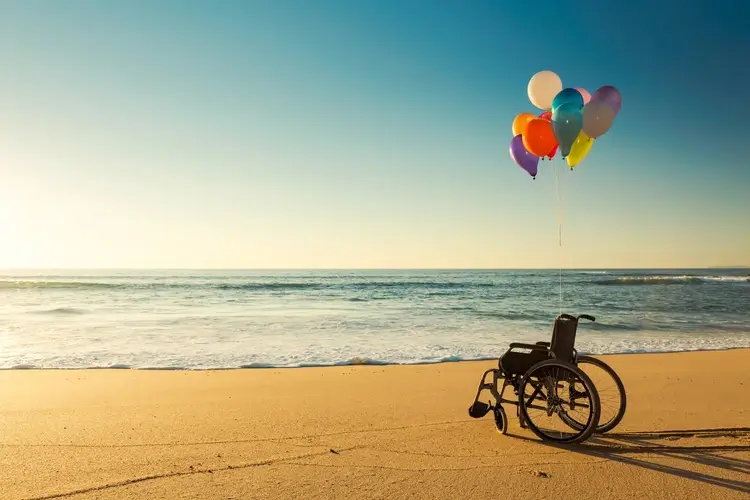
Portugal is our all-time favorite haven. It’s safe, welcoming, and full of friendly locals, not to mention home to some of the best beaches and golf courses in the world. Portugal also has world-class health care and top-notch infrastructure. English is widely spoken, too.
Many cities like Lisbon and Porto have steep hills that aren’t navigable for people with mobility impairments.
Lisbon is hilly and full of narrow passageways with many steps that are paved in cobblestone…
The pavement is difficult to navigate for even the nimblest among us.
In newer construction (new museums, train stations, etc.), you’ll find better accessibility… but there’s a long way to go before the government is able to meet the basic needs of people with disabilities.
That said, Portugal still offers a lot of choices for people with disabilities.
Public Transportation
Portugal wants its public transit to be convenient for everybody. The metro is completely wheelchair accessible, as are many of the country’s public buses. Most taxis don’t have ramps suitable for motorized wheelchairs, but regular taxis are an excellent choice for travel if you have a folding wheelchair.
Accommodation
Many of Portugal’s hotels are accessible, with ground-floor options and ramps, accessible swimming pools, lower beds, room lights that can be accessed from the bed, as well as many other features.
Dining
A lot of restaurants are still working on being more accessible, but dining al fresco is popular across Portugal, meaning there’s no need to navigate stairs and cramped interiors.
It’s true that some of Portugal’s beaches do have stairs—most notably the Algarve’s Praia do Camilo which entails a 225-step journey to reach it. But the country is also home to some 200 beaches and riverside bathing areas that are accessible for wheelchair-users and those with mobility issues.
Start Your New Life Today, Overseas
#3. France

France offers the world’s best quality of life for anyone…
Whether it’s life in the most romantic city or life outside of Paris in the rustic French countryside, France is one of the most sought-after countries in the world.
It attracts more visitors than any other country in the world, and that includes people with disabilities…
Public Transportation
This is probably France’s weakest point on accessibility. The buses have wheelchair access, but the metro isn’t as accessible. The stations are not yet designed to accommodate wheelchair-bound passengers. There are steep staircases and large gaps between platform and train.
Accommodation
Accessible accommodation is widely available in France.
Attractions
While some attractions such as the Eifel Tower only have limited accessibility, most sites and tourist attractions are wheelchair friendly.
Taxis
There are plenty of wheelchair-friendly taxis in France.
Start Your New Life Today, Overseas
#4. Ireland
Ireland has come a long way as regards disabled access and support. Full accessibility is the law for all public buildings in Ireland, and all new residential buildings now comply with this mandate.
Old architecture, narrow streets, and narrow footpaths can sometimes make navigating the small towns or villages more challenging but great strides are being made at national and local levels to find workarounds.
A number of beaches around the country offer beach wheelchairs and disabled access. They’re not year-round and you may need to book in advance. You can find a list of accessible beaches and contact information, here.
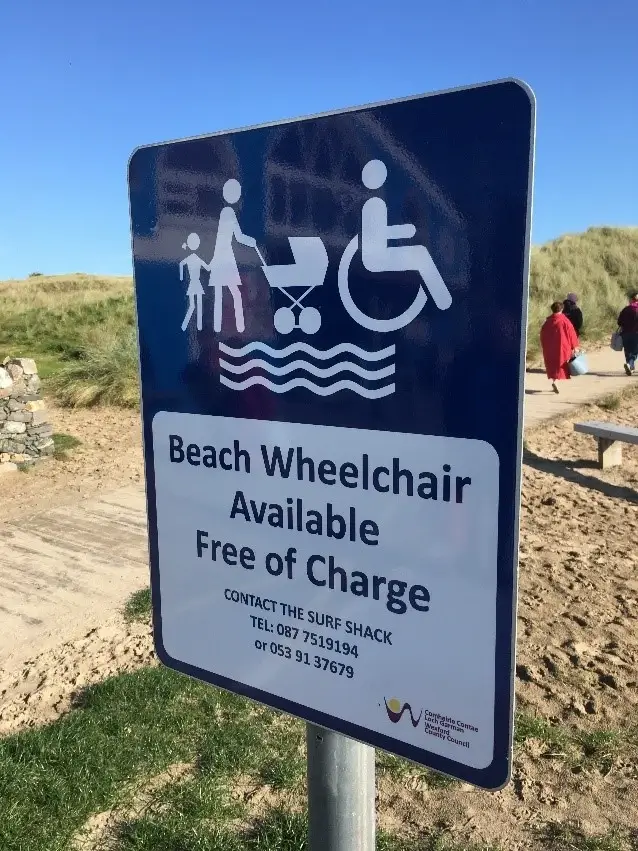
Transportation
In Dublin, you’ll be able to make use of most all public transport options, be it the Luas tram, buses, or train. In much of the rest of the country your options may be more limited. Motability Ireland offers a car rental service for reduced mobility customers throughout Ireland. Their vehicles come with fully comprehensive insurance and around-the-clock roadside assistance. You can contact them here. Most all public buildings, amenities, and attractions offer wheelchair-friendly parking.
Accommodation
Accessible accommodation is widely available in Ireland.
Attractions
While some historical sites won’t be wheelchair accessible, most museums and attractions in larger cities, such as Dublin and Cork, are.
Taxis
There are plenty of wheelchair-friendly taxis in Ireland. Look out for the wheelchair icon on the vehicle’s roof which identifies them.
#5. Greece
iStock/Aleh Varanishcha
A new initiative in Greece means hundreds of beaches are now fully accessible to wheelchair users and those with mobility issues.
The multi-million euro project uses the all-terrain SEATRAC system—a fixed track mechanism featuring a remote control-operated chair that can be moved in and out of the water.
Beaches using the system also feature wheelchair-friendly parking, walkways, changing rooms, toilets, and shaded areas.
You can find a full list of beaches with SEATRAC systems here. As well as across Greece and her islands, you’ll also find beaches in Italy and Cyprus listed.
That initiative aside, general accessibility varies across the country. On the island of Corfu, for example, access for those with mobility issues is mixed.
The north is hilly, with steep and often uneven roads in the villages. To reach most of the north’s beaches, you have to hike down steep rocky dirt trails. They can be challenging to reach even for those without physical impairments. On the whole, the north is not accessible to those who use wheelchairs or have special needs.
In the flatter southern half of the island, the situation is a bit more Andreas Skoupouras, the Deputy Mayor for Welfare and Social Policy promising. Andreas Skoupouras, the Deputy Mayor for Welfare and Social Policy, has made accessibility for people with special needs a priority.
As someone who uses a wheelchair himself, he has inspired changes across the community…
Corfu’s Old Town is now 80% accessible, and an app is being developed with maps showing different routes for wheelchair users. On 20 of the island’s beaches, you’ll find floating wheelchairs as well as a SEATRAC system.
Start Your New Life Today, Overseas
#6. Milan, Italy

Italy has a lot of work to do to become truly accessible. Cobblestone streets abound, accessibility isn’t emphasized in rural areas at all, and popular cities are often congested with cars and scooters, making it difficult for people in wheelchairs to get around…
However, Milan is an exception, which is why Italy is included on this list. Milan won Italy the 2016 EU Access City Awards for the great work it has done towards making itself inclusive and accessible to all.
Public Transportation
Milan’s public transportation uses low-level buses that are equipped to help wheelchair-bound customers board.
Accommodation
Many hotels in Milan are accessible and prepared to make people with disabilities feel as comfortable as possible. This includes lower beds, handrails in bathrooms, and ramped floors.
Attractions
Pretty much all the museums and art galleries in Milan are accessible or can accommodate guests with disabilities as long as they are contacted beforehand.
Trains
The Italian railroad network is well-equipped to accommodate people with disabilities. There are specially designed reception areas and coaches. The large Central Station has a lift to transport mobility impaired customers from the ticket office to the platforms.
#7. Rio De Janeiro, Brazil
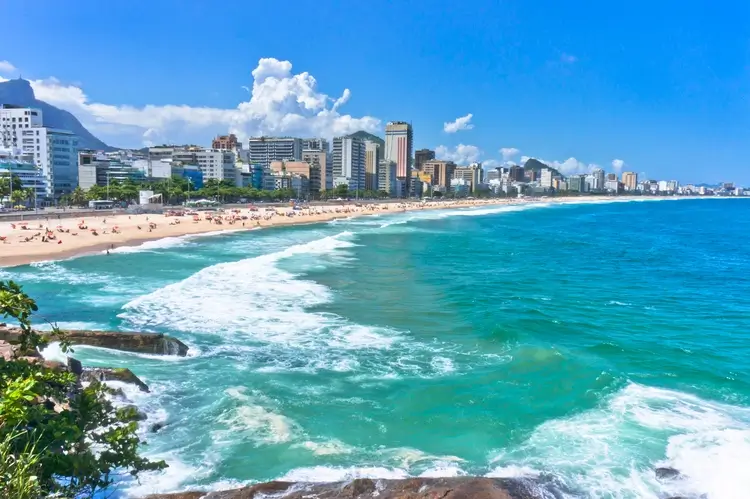
Brazil offers amazing potential for expats and retirees. It boasts amazing beaches, breath-taking natural beauty, excellent food, friendly people, and a great climate.
Rio De Janeiro is ranked as one of the best places for accessibility in South America.
Sidewalks
In the big cities like Rio, the sidewalks are generally accessible for people with wheelchairs. Although there is some variation, most curbs have level access. The biggest issues tend to be parked scooters and disrepair.
Public Transportation
Nearly all buses in Brazil are wheelchair accessible and have a wheelchair lift in the center (although some may be in disrepair). The subway is also wheelchair accessible with lift access from the street.
Accommodation
There are many accessible hotels in Brazil with elevators, easy access ramps, handrails, and chairs in showers.
Attractions
The main tourist sites in Brazil are wheelchair accessible and there are many tours designed specifically for those who need special access.
Here’s what to expect access-wise in some of our other favorite havens…
Start Your New Life Today, Overseas
#8. Kotor Bay, Montenegro
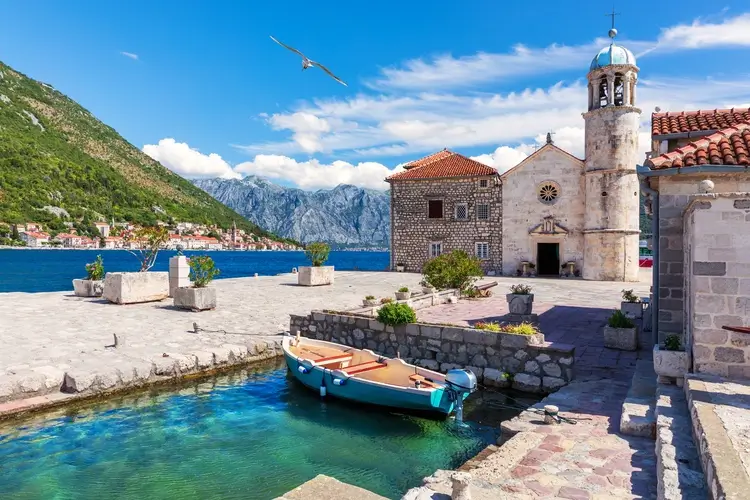
Access for people with mobility issues varies across Kotor Bay…
Tivat is the most accessible option for people who are wheelchair bound because it’s the most modern. Buildings that have multiple floors are likely to have elevators, and restaurants and shops are level with the town’s long, flat boardwalk.
More modern areas of Kotor, Montenegro, may be slightly more mobility-friendly…
Kotor Old Town is not very accessible. Most shops make you go up at least one step to enter, and there aren’t many ramps. Old buildings in this area do not have elevators, and the UNESCO status likely means that can’t be retrofitted for them.
It’s best to stick to the areas with more modern development, like Tivat and parts of Kotor, if you have a mobility issue.
#9. Thailand

Accessibility is an area where Thailand has improved greatly over the past decade. It started with builders making disabled access part of the building code with ramps and elevators.
Nowadays you’ll often see public facilities and private businesses retrofitting to accommodate disabled visitors. All of the public transportation in major cities is equipped for disabled access, as are shopping malls.
#10. Medellín, Colombia
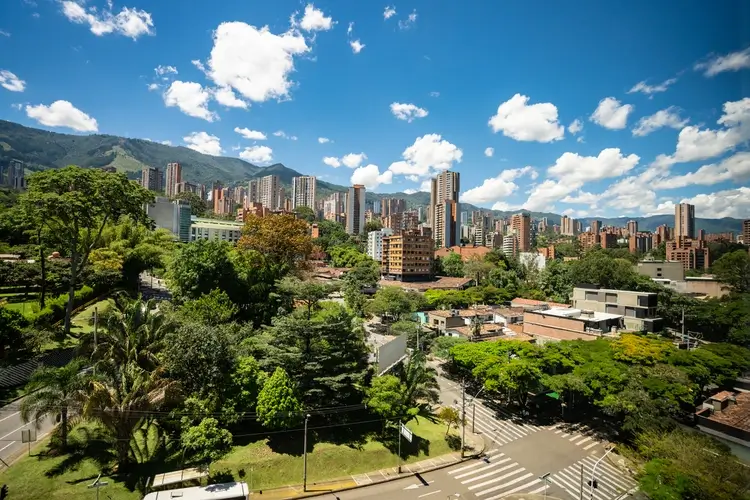
At first glance, Medellín seems like a terrible destination for those with mobility issues. While it’s true that there are some steep hills, efforts to make the city more accessible are ongoing.
Just take the heart-warming story of Mobility, Accessibility, Time, and Work (MATT)—a start-up founded by local Wilson Guzmán who has been disabled since age 17. It has a fleet of electric hand-bikes that can be attached to wheelchairs, which help people zip around the city’s hilly streets.
MATT leads three-hour tours on the electric wheelchairs for all, which helps to shine a light on the issues those with disabilities face and encourages further improvements. You can discover more about MATT, here.
There is still much work to be done, though, as there’s a noticeable lack of proper ramps on many streets and accessible entrances at buildings.
If you have serious mobility issues you may have a hard time in Medellín, especially in hilly areas like Poblado. A flat area like Laureles is a better choice.
While it’s possible to find accessible apartments, you may still have some issues getting around the city.
Start Your New Life Today, Overseas
#11. Mexico
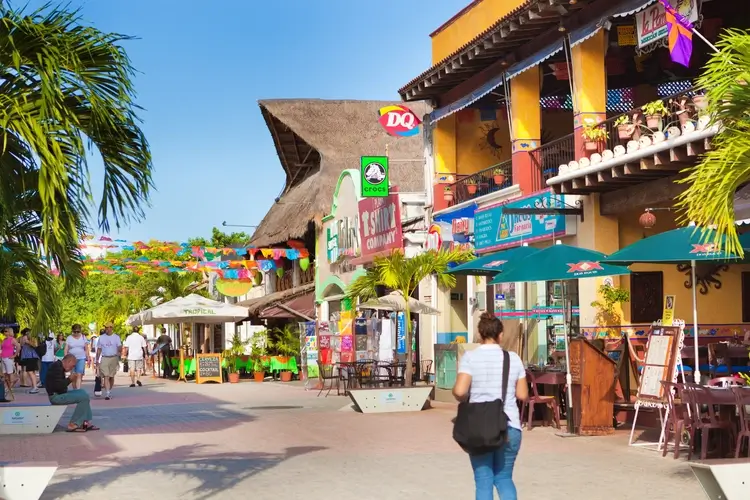
Accessibility in Mexico can be hit or miss. The country signed the 2007 UN Convention on Rights for Persons with Disabilities and brought in further accessibility regulations a couple years later so efforts have been made… but the implementation is far from perfect.
While older cities face accessibility challenges owing to cobblestone streets and hilltop settings, newer resort areas such as Cancún and Playa del Carmen offer better than average wheelchair accessibility by local standards.
In Mazatlán, the street and sidewalk ramping is decent in the historic center. Also, the boardwalk was completely rebuilt in 2018-2019, so it’s up to date. The Soriana Supermarket near the Golden Zone is wheelchair-friendly, with moving ramps.
Most of the oceanfront businesses in the historic center are wheelchair friendly, while businesses elsewhere in town are hit or miss… some have a step at their entrance. The town is fairly level, and drivers tend to be pedestrian-aware… although not quite like they are in the States or Canada.
As with many beautiful Mexican cities, Oaxaca is full of cobblestone. Other than the central part of town, it’s also quite hilly. Not exactly the best environment for those with mobility issues…
That being said, many of the streets in central Oaxaca are lined with (mostly) smooth sidewalks on both sides. Navigating them can still be tough, especially when the streets are packed.
Also, wheelchair-accessible parking is available in Oaxaca.
Puerto Vallarta is another spot that, for the most part, is not great for those with mobility issues. Much of the central area is composed of hilly, cobblestone streets. Many homes in the area are also only accessible via stairs.
Those needing wheelchair access will want to look to the newer developments in the Marina or up in Nuevo Vallarta. In these areas you’ll find paved sidewalks, ramps, and elevators.
Further Resources
-Wheelchair Escapes
Wheelchair Escapes is a group formed by paraplegics to help travelers with disabilities plan their next vacation or to set up group vacations. They can help you set up accessible helicopter tours, scuba diving, swimming with dolphins, and other types of adventures.
-Latin America For All
Latin America For All works with clients with all kinds of disabilities to take them on tours in Latin America.
-Wheelchair Tours
Wheelchair Tours offers accessible travel packages in Thailand.
-Seable
Seable is a U.K. company that specializes in trips for people with mobility issues as well as and for blind and visually impaired travelers. Their offerings include accessible sports vacations, wine and food tours, and cultural excursions.
-Planet Abled
Planet Abled offers fully accessible and assisted trips and tours throughout India and Southeast Asia for people with different disabilities.
-Tapooz Travel
Tapooz Travel helps to plan customized trips for travelers of all abilities and their traveling companions to a host of destinations in across the U.S. and Canada, as well as farther afield.
-Wheel the World
Whether you want a beach trip, adventure travel, nature or city explorations, Wheel the World can help. They offer tours in over 160 destinations and list over 2,200 accessible accommodation options.
-Easy Access Travel
Committed to meeting the special needs of disabled and mature travelers, Easy Access Travel specializes in cruises and package tours to accessible destinations.
Start Your New Life Today, Overseas
Frequently Asked Questions About Disability Friendly Countries
Does Being In A Wheelchair Affect Getting A Resident Visa?
No, being in a wheelchair will not impact your chances of getting residency overseas. There is often a medical exam required as a part of the residency process, but it’s a formality.
The only conditions that preclude residency in some countries are tuberculosis and certain transmittable blood diseases. In fact, many countries give preferential treatment to those with mobility issues or other additional needs, including fee waivers, fee reductions, lower thresholds of qualification, and expanded allowances for dependent visas.
Is Belize Wheelchair-Friendly?
Improvements have been made in recent years, but Belize is generally not wheelchair-friendly.
There are few elevators and many steps. The typical terrain is uneven and rough. Barrier-free design and building are foreign concepts. Many bathrooms in the country are a challenge even for people with full mobility.
Generally, we discourage less-abled people from considering Belize if accessibility is a major concern…
For instance, there isn’t enough room for a wheelchair in public restrooms at the Belize International Airport. It’s a big deal for people in the United States who’re used to ADA-compliant buildings.
What European Country Is Suitable For Wheelchair Users?
Facilities for the wheelchair-bound in Europe can be hit-or-miss. Conditions vary depending on country, city, towns, even from neighborhood to neighborhood… but, rest assured, there are plenty of good options for moving to Europe in a wheelchair.
Generally speaking, Northern Europe shines when it comes to accessibility, with top rated countries including Netherlands, Germany, and all of Scandinavia.
If you’re looking for someplace a little warmer, Spain is a good choice. It’s one of the most wheelchair friendly countries in the world, with Barcelona in particular standing out for its accessibility. Many of the streets have been adapted to be more wheelchair accessible, including the historical cobblestoned areas.
The main bus systems in all Spain’s major cities have accessibility for people with disabilities, including ramps to help those in wheelchairs board. You’ll also find many hotels that are wheelchair accessible. The same applies to most attractions and tourist sites. Some offer discounts or even free entry to people with disabilities.
Keep in mind that tourist areas will always outperform local areas… and modern areas will always beat more historic ones.
Many European cities and towns are proud of their accessible amenities. Beaches, for example, often have boardwalks that not just run parallel to the water but also lead right down to it, making it easy for those with wheelchairs or strollers to enjoy the waterfronts. Many beaches offer sand-ready and amphibious wheelchair rentals, too.
Look for beaches with Blue Flags, global awards given to beaches for their eco-responsibility and accessibility. The Total Beach Access initiative focuses on making beaches accessible to the elderly, families with strollers, and people with physical disabilities or visual impairments. Read more about it here.
Other top recommendations include Europe’s capital cities, which are pretty reliable when it comes to ramps on sidewalks and into buildings. You’re more likely to find residential buildings to accommodate you. Public transportation is almost entirely wheelchair accessible, and because the cities are compact, they’re easily accessed by your own wheels, too.
Plus, this is where the major museums, tourist sights, and event spaces would be, which are all consistently accessible. Many offer discounts or even free entry to people with disabilities.
On the other hand, the older of these cities might not always have elevators in their buildings, and if they do, they might not always fit a wheelchair. Housing options will be more limited based on your accessibility needs.
Most all spaces in Europe are smaller than what you may be used to in the United States or Canada, so navigating them isn’t always easy on four wheels—restaurants, shopping, even rolling down the street can be more difficult than you’re probably used to.
While many sidewalks are paved and easy for rolling, some will be cobbled, which can take more effort and be less comfortable. In cities with tram systems, like Amsterdam or Milan, the tracks on the roads can be a danger for wheels.
And while some forms of public transport will be accessible, not necessarily all of them will be. In Paris, we’d recommend the buses but not the metro. In Milan, the metro over the buses or trams. In Barcelona, buses and metros are good to go.
Newer cities, or cities with more recently built neighborhoods, like Milan, Madrid, or Barcelona, for example, have much more consistently available accessibility features. La Rochelle, France, and Ljubljana, Slovenia, are two more good options.
If the city isn’t your thing, you could opt for village life instead, which could be just as fulfilling. Small towns in Europe often revolve around the local market, which would almost always be accessible, making it easy to integrate.
Contrary to city living, houses would be the norm, rather than apartments, so it might be easier to find suitable housing that could be adapted to your needs. Keep in mind that cobbled streets might be an issue, and you’d probably want transport to do some of your bigger shopping.
Take a look at this video from LIOS Editor-at-Large Kat Kalashian for more information.
Is Cuenca, Ecuador, Wheelchair-Friendly?
The wheelchair access in Cuenca is hit or miss.
The small mom-and-pop shops mostly won’t have any special access features, although you can get into some anyway. There’s often a step up or down
from the street.
The streets in the historic center have wheelchair ramps at the intersections, and you can get around pretty well there. Hospitals and doctors’ offices are fine.
But overall, we would not recommend Cuenca for those people in a wheelchair who still lead the active, independent life that our reader seems to refer to. If you’re mostly at home, it may be fine.
What Are The Best Expat Destinations For A Wheelchair-User?
Some of the world’s most accessible destinations for wheelchair-users are found in Europe and Asia.
In The Netherlands, most attractions and the entire public transport system is wheelchair-accessible.
Germany is also a solid choice, with accessible public transport for people who are in wheelchairs, have mobility issues, are blind or partially sighted, or deaf or hard-of-hearing.
Berlin’s wide, smooth pavements make navigating the city comfortable for wheelchair-users. Plus, the majority of the city’s attractions are also disability-friendly.
In Asia, Japan is one of the best destinations for wheelchair users.
On the other end of the scale, Central America isn’t really set up for wheelchair access. Panama City may likely be one of the best options in this region but it’s not perfect.
In South America, most major cities have reasonable to good wheelchair access.











